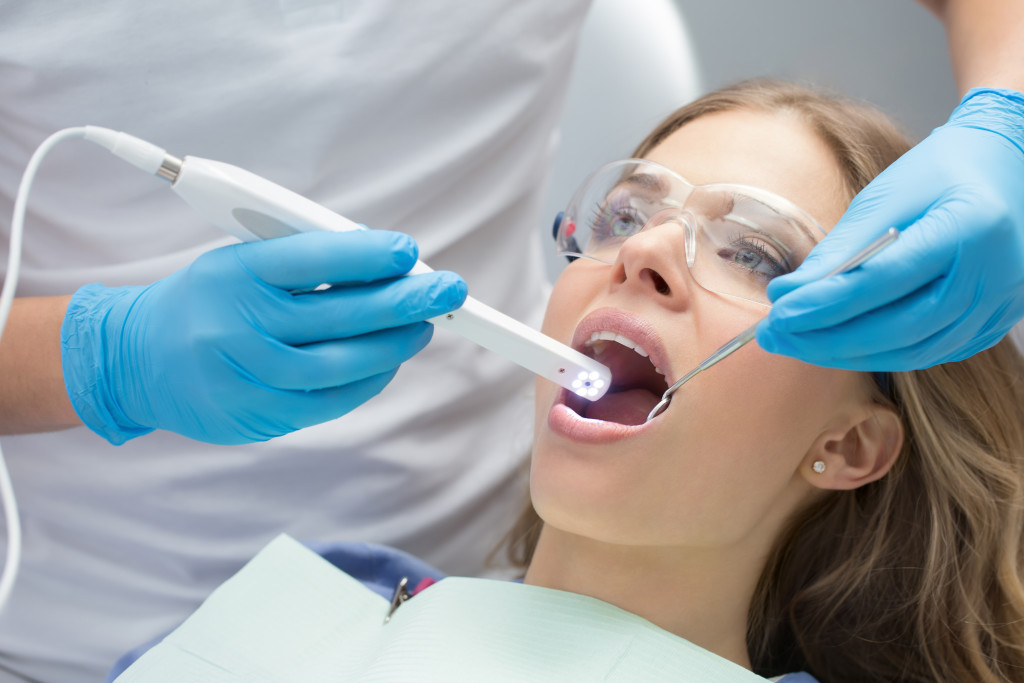Dental technology has come a long way in the past few years, and today’s dentist has a number of innovative tools at their disposal. From digital x-rays to dental lasers, these new technologies are not only more accurate and efficient, but they’re also more comfortable for the patient.
This blog post will take a look at the most innovative technological advancements in dentistry and how they’re changing the way we care for our teeth.
1. Digital X-Rays
As digital technology advances, more and more medical procedures are being digitized. One of the most recent examples is the switch from traditional film-based X-rays to digital X-rays.
This new technology offers several advantages over the old method.
- Digital X-rays can be viewed instantly on a computer screen, allowing doctors to make a diagnosis more quickly.
- They can be stored electronically, making them easier to access and share with other doctors.
- These X-rays expose patients to less radiation than traditional X-rays, making them a safer option.
For example, wisdom tooth removal is a common dental procedure that often requires X-rays. Dentists use digital X-rays to get a clear view of the wisdom teeth and determine the best way to remove them.
2. Dental Lasers
Dental lasers are another new technology that is changing how we practice dentistry. Lasers can be used for various dental procedures, including teeth whitening, cavity detection, and gum surgery.
Lasers are more precise than traditional dental tools, which means they can be used to target specific areas without damaging surrounding tissue. This precision also allows for less pain and discomfort for patients during procedures. Dental lasers are becoming increasingly popular as more dentists are trained to use them.
3. CAD/CAM Dentistry
CAD/CAM (computer-aided design and computer-aided manufacturing) dentistry is a new technology that is revolutionizing the way dental crowns and bridges are made. Traditionally, the process of creating a dental crown or bridge involved taking an impression of the teeth, making a model of the mouth, and then creating the restoration from that model.
CAD/CAM dentistry uses digital imaging to create a 3D model of the mouth, which can then be used to create the restoration. This new technology is faster, more accurate, and less invasive than the traditional method.
4. Intraoral Cameras
An intraoral camera is a small, handheld camera that is used to take pictures of the inside of the mouth. These pictures can be used for diagnosis, treatment planning, and patient education.
Intraoral cameras offer several advantages over traditional dental X-rays. They are less invasive and expose patients to less radiation. They also allow patients to see what the dentist is seeing, which can be helpful in understanding their condition and treatment options.

5. Chairside Monitors
Chairside monitors are computer screens that are located in the dental operator, next to the patient’s chair. These monitors allow dentists to display X-rays, intraoral photos, and other images for patients to see during their appointment.
This new technology is becoming increasingly popular as it can be helpful in explaining dental conditions and treatment options to patients. It can also be used for patient education, such as showing patients how to properly brush and floss their teeth.
6. Dental Implants
With the advent of dental implants, people who have lost teeth no longer have to worry about their smiles. Dental implants are titanium posts that are surgically placed in the jawbone to act as replacements for missing teeth.
Dental implants can be used to support a single tooth, a bridge, or a denture. They are a popular option because they are strong and durable, and they look and function like natural teeth.
7. ITR (Immediate Tooth Replacement)
ITR is a new technology that allows dentists to place dental implants immediately after a tooth is extracted. This new procedure eliminates the need for a waiting period between tooth extraction and implant placement.
ITR offers several advantages over the traditional dental implant procedure. It can reduce the overall treatment time and the number of surgical procedures required. It can also improve the aesthetic results by minimizing the size of the implant site.
8. Dental 3D Printing
The method of creating three-dimensional solid items from a digital file is known as 3D printing. It is also being used in dentistry to create dental implants, crowns, bridges, and other dental prosthetics.
Dental 3D printing is a newer technology, but it offers several advantages over traditional dental methods. It is more accurate, faster, and less expensive. It can also be used to create custom dental prosthetics that are not available with traditional methods.
Dentistry is one of the most rapidly advancing fields in medicine. Every day, new discoveries are made that improve dental care and make it more accessible to people worldwide. In this article, we’ve highlighted some of the most innovative technological advancements in dentistry. We hope you find them as exciting as we do! What do you think will be the next big thing in dentistry?
